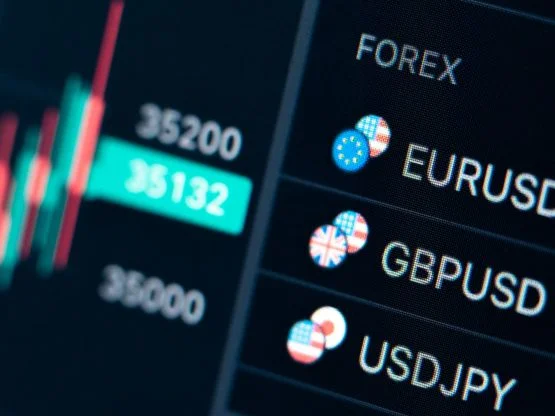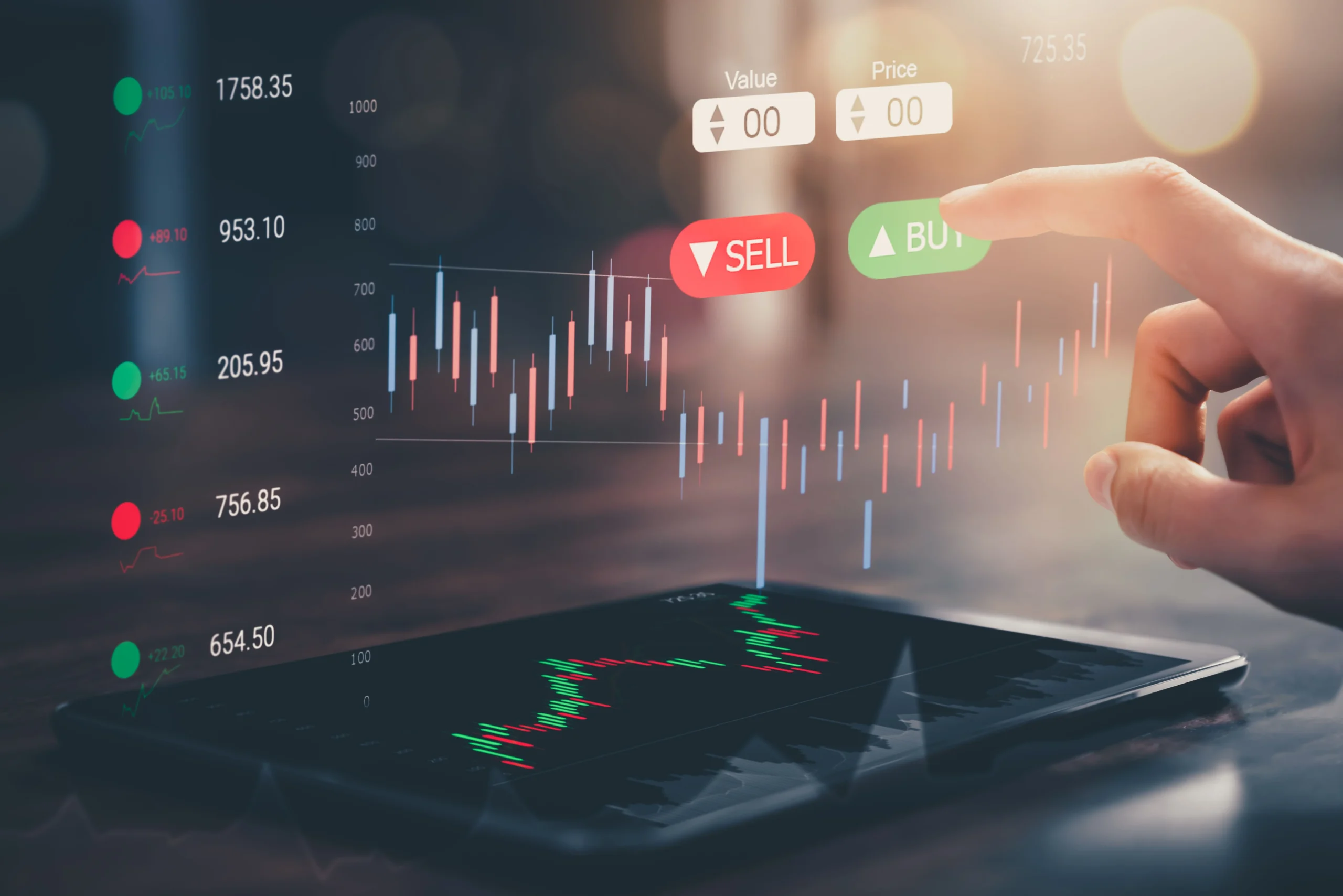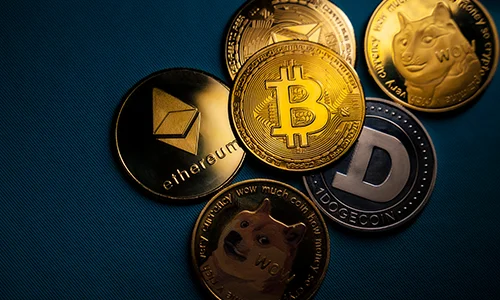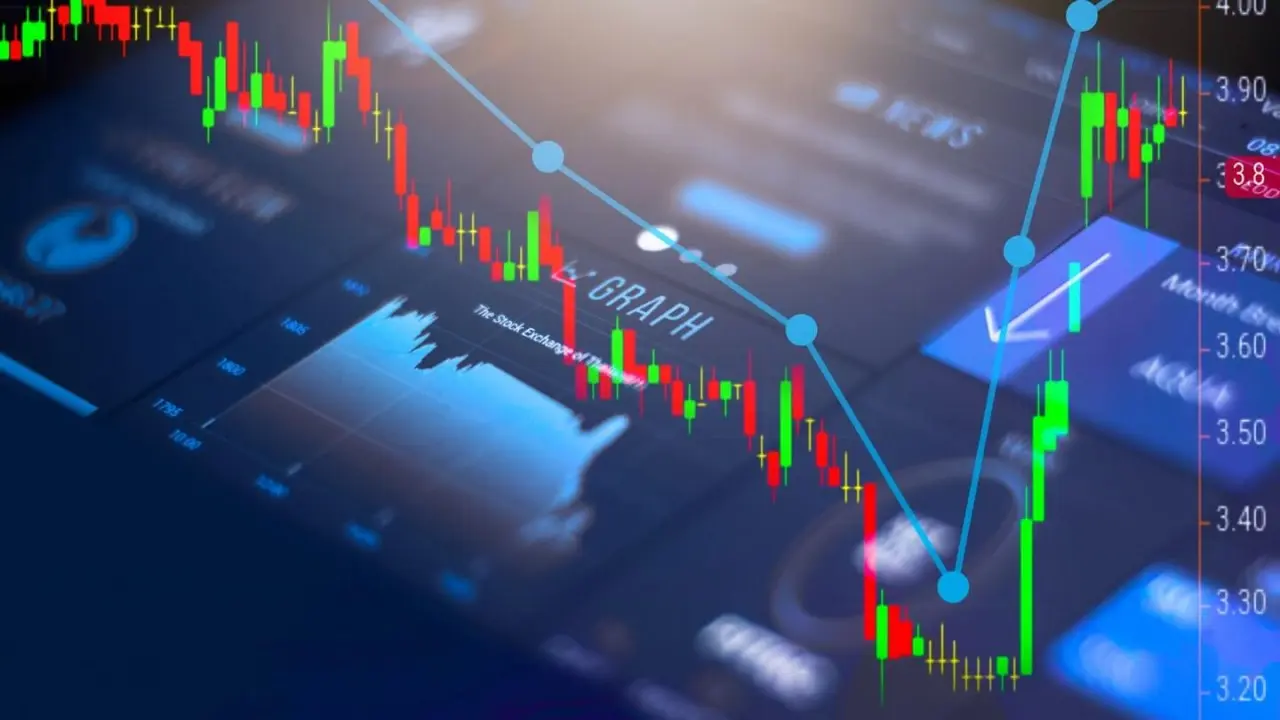Bitcoin halving happens roughly every four years and is significant in many ways. This event led to a decrease in the supply of Bitcoin and its scarcity. Anything that becomes rare increases in value. When most of us hear the name Bitcoin, our minds go to the price and profit of this digital currency. A name that seems simple on the surface, but there is an extraordinary complexity at the heart of it. Regulating and confirming transactions, miner rewards, Bitcoin halving, its cryptographic model, and many others are just some of the complexities of this unique technology.
Bitcoin halving is a topic that is very important for traders and enthusiasts of this digital currency. In this article from Aron Groups broker, we will answer the question of what Bitcoin halving is, how this process will affect the future of Bitcoin, and when the next Bitcoin halving will occur. So stay with us until the end of this article.
Table of Contents
Basics of the Bitcoin network
To better understand the concept of Bitcoin halving, we first need to know a little about how this network works. Bitcoin’s underlying technology, the blockchain, generally consists of a collection of computers, or so-called nodes, that run Bitcoin software.
These computers contain a partial or complete history of transactions carried out on the network. Each node is responsible for confirming or rejecting transactions in the Bitcoin network. The nodes perform a series of actions to ensure that the transaction is valid.
Each transaction is verified individually, and after verification, the transaction is added to the existing blockchain; by adding more computers or more nodes to the blockchain, the stability and security of the network increase. Based on available data, by late August 2022, it is estimated that more than 15,000 nodes were running Bitcoin code. It’s good to know that anyone can participate as a node in the Bitcoin network, provided they have the right hardware and enough storage space to download the entire blockchain.
Bitcoin mining
Bitcoin mining is a process where people use their computers to process and validate transactions on the Bitcoin network. Bitcoin uses a mechanism called Proof of Work (PoW); this means that miners must prove that they were involved in processing transactions and verifying them in order to receive a reward. Participation means the same time and energy needed to solve complex mathematical equations and finally verify transactions.
You’ve probably heard the term “Mine” a lot about Bitcoin. Mining in the traditional sense that we all know is not used in the Bitcoin network. This term actually refers to collecting precious stones with hard work. In the Bitcoin network, BTC is actually the new digital precious stone that many are looking to acquire.
Bitcoin miners verify the legitimacy of a transaction by solving complex mathematical problems. Then, these transactions are added to a block, and chains of these blocks are created. Miners who have processed and verified transactions within the block are rewarded. Here, it is not bad to point out that the transactions that contain high amounts need more confirmations to ensure their correctness.
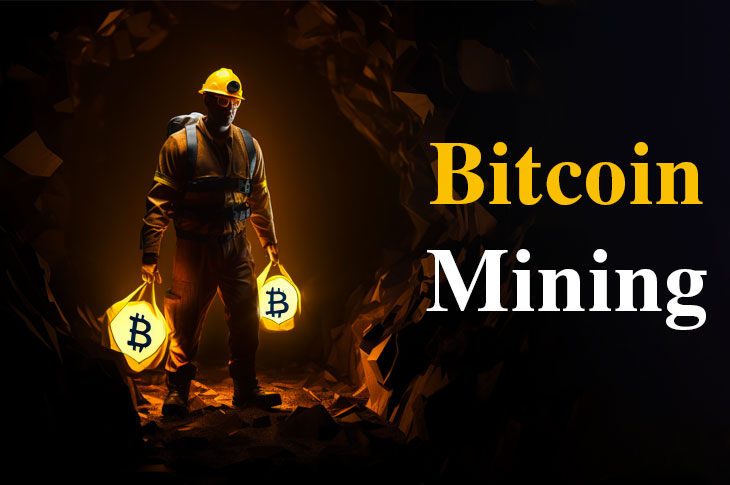
What is halving, and when does it happen?
The word “Having” is derived from the root of the English word “Half,” which means to halve. In the digital currency market, halving is the process of halving the reward of mining each block.
Since an average of 6 blocks are found every hour and the Bitcoin halving event happens after every 210,000 blocks, it can be roughly said that the halving event happens every 4 years.
The halving event does not take place on a specific date, and its approximate time is once every 4 years. In other words, the measurement of halving time is calculated according to the number of blocks added to the chain and has nothing to do with time; however, according to the rules established in the Bitcoin network, this event occurs approximately once every 4 years.
You may think that knowing such things is not necessary for trading and activity in the cryptocurrency market. Still, by knowing the nature and reason of what happens in this market, you can start trading or investing with an open mind.
The reward system of the Bitcoin network will continue until 2140 when all 21 million Bitcoin units will be mined. At that stage, in order to keep the network stable in terms of security and for the miners to continue working, transaction fees will replace the received rewards. In fact, these fees ensure that miners are still motivated to mine and maintain the network.
As we mentioned, the maximum supply of Bitcoin is 21 million units. By the end of November 2023, about 19,541,043 Bitcoins have been mined, which means that there are only about 1.1 million BTC left to mine all available Bitcoins.
read more: What determines the Bitcoin price?
Having’s philosophy
The most important philosophy of hawing is the main law governing all financial markets, i.e., supply and demand.
Perhaps it would be better to hear the philosophy of this process from the words of Vitalik Buterin, the creator of the second-largest cryptocurrency in the digital currency market. Buterin says:
(The main reason for doing this is to control inflation. One of the biggest mistakes of traditional fiat currencies that are under the control of central banks is that these banks can print as much money as they want. If they print too much money, the value of the government currency will quickly decrease according to the law of supply and demand.)
Unlike traditional currencies, Bitcoin is designed to act like a valuable commodity, like gold. The amount of gold available in the world is limited, and by extracting every gram of it, it becomes more difficult to extract the remaining gold.
It is because of this limited supply (inventory) that gold has been able to solidify its foothold as a means of exchange and a means of storing value during the last six thousand years. We hope that Bitcoin will be able to do it.
David Weisberger, CEO of trading platform CoinRoutes, says that Bitcoin’s inflation rate is currently less than 2%, which will decrease further with halving. You can compare Bitcoin’s inflation rate favorably with annual inflation rates in other fiat currencies and indices, including the Consumer Price Index (CPI).
Chris Klein, director of operations for Bitcoin IRA, said: “Bitcoin’s reduced production is what defines it as finite. When rewards decrease, supply is limited, and if there is an increase in demand when supply is limited, it has a positive effect on the price, which can make Bitcoin attractive to investors.

History of halving
At the beginning of Bitcoin, for creating each block in the network, the miner who succeeded in doing so received 50 Bitcoin units as a reward.
The first Bitcoin halving event took place on November 28, 2012, at block number 210,000. After the first halving event, miners’ rewards were reduced from 50 to 25 bitcoins for each block added to the network.
The next halving event took place on July 9, 2016, at block 420,000, adding another 210,000 blocks to the Bitcoin blockchain network.
This event reduced the reward for miners from 25 units to 12.5 units for connecting new blocks to the network.
The third and final halving took place on May 11, 2020, at block 630,000. After this event, the miner’s reward reached 6.25.
How to Halve Bitcoin Rewards?
Bitcoin network transactions are collected in the mempool, nodes or nodes (NODE), select a number of these transactions (the size of a block), then in a process called the mining process, confirm and validate these transactions, the node performs a series of checks to ensure that the transaction is valid.
Each transaction is checked individually, and after confirming all the transactions in a block, the created block is sent to other nodes. If the majority of nodes approve the block, the block is extracted and added to the block.
The node that created this block and sent it to other nodes receives a reward in the form of bitcoins that reward is halved every 4 years. The reward of the first block was 50 bitcoins; at the time of this writing, its reward is equivalent to 6.25 bitcoins, which is a good incentive for miners considering the price of BTC.
As the number of nodes or nodes added to the blockchain increases, the stability and security of the Bitcoin blockchain network increases.
In the Bitcoin network, blocks are added approximately every 10 minutes, and the Bitcoin halving dictates that after every 210,000 blocks are created, miners’ rewards are halved, which happens roughly every four years during periods that are often accompanied by increased volatility in the price of Bitcoin.
A noteworthy point!
Anyone can participate as a node in the Bitcoin network (they have access to all information and transactions and can view them), but they can be a miner when they are active in the Bitcoin network. (Apart from being able to access the information and transactions of the entire network, it also verifies their validity).
Impact of halving on BTC price
Based on the price changes of Bitcoin after each halving, it is clear that halving can affect the price of this coin. However, this is not certain, and no one can say that halving will definitely increase or decrease the price of Bitcoin. Examining the history of bitcoin mining reward halving and the price situation after each occurrence of this event will shed some light on this issue.

Bitcoin price after each halving
First halving in 2012: Mining reward increased from 50 Bitcoins to 25. In 2012, when the first bitcoin halving event took place, at first the price of bitcoin was down for 6 weeks, but after some time, the price of bitcoin increased to $230, while at the time of the halving, the price of bitcoin was $13.32. It goes without saying that some consider this price increase to be caused by the prevailing political climate at that time.
Second halving in 2016: Mining reward increased from 25 bitcoins to 12.5. In the second halving of Bitcoin in 2016, the price of Bitcoin did not grow much after this event, but within a year, the price of Bitcoin reached $20,000, and Bitcoin was able to register a growth of 31%. (Bitcoin price at the time of the second halving was $650)
Third and last halving in 2020: Mining reward increased from 12.5 Bitcoin to 6.25. The third and final Bitcoin halving to date took place on May 11, 2020. In this halving, Bitcoin was no longer an unknown cryptocurrency, and many people knew this cryptocurrency; the coronavirus epidemic on the eve of Bitcoin halving caused many people to turn to this cryptocurrency, considering the nature of Bitcoin and its deflationary feature. In this way, they could experience a lot of profit in addition to maintaining the value of their property. As a result, regardless of short fluctuations in a few days, the price of Bitcoin experienced significant growth.
The impact of halving on miners and investors
The halving is an important event and has not been without its impact on various other parts of the BTC network. Halvings reduce supply and increase demand. In this way, prices go up, and this news is good for investors. Halving leads to increased transaction activity on the Bitcoin blockchain.
Having also had a significant and complex effect on miners. On the other hand, the decrease in supply leads to an increase in the demand for buying BTC and, consequently, an increase in the price. On the other hand, halving challenges the survival and durability of personal miners by halving the rewards. So, private miners are not able to compete with big BTC mining organizations, and they inevitably leave the network. In other words, an increase in the price of digital currency leads to a decrease in the number of miners in the ecosystem. The withdrawal of miners from the network will result in a 51% chance of an attack on the network and endangering its security.
The impact of the halving on the price of Bitcoin
Many wish to travel back in time so that they can buy a lot of bitcoins, which, of course, is not possible. However, by examining the past, you can find a better view of the future.
Bitcoin is currently trading at $640, with a 50% increase compared to the beginning of the year. Although political and economic factors played a role in this price growth, the impact of the halving event on this price increase has been more significant.
Experts gave completely different opinions about the impact of halving (especially from 2020 onwards) on the price of Bitcoin.
Price increases
Many expect an increase in the price of Bitcoin, citing various reasons. They believe that although the increase in the price of Bitcoin will not happen in a short period, the price of this cryptocurrency will rise slowly and continuously.
This group of experts believes that the reduction of the reward for miners may cause a temporary drop in the price after the Bitcoin halving. Still, the halving has always acted as an effective factor to start the growth of the Bitcoin price.
Price reductions
Some experts believe that even if everything goes well, there may be factors out of their sight that will cause the price of Bitcoin to fall. As you know, the price of Bitcoin is affected by many factors, of which halving is one of them.
No change in price
According to some experts, the amount of Bitcoin inflation reduction compared to the volume of daily transactions is so small that it can be ignored.
The necessity of halving the Bitcoin network
There are many articles about the impact of halving on the Bitcoin network, which we only mentioned a part of in this short article. For example, actions that miners should take during halving and after, and things like that that are useful for traders and miners of this currency. What we discuss in this section is the importance and necessity of halving the Bitcoin network. Thanks to Satoshi Nakamoto, Bitcoin is able to withstand inflation; the same is not the case with fiat currencies, and this happens because of halving.
The effect of halving transaction fees
According to data from BitInfoCharts, Bitcoin network transaction fees fell by 91% from $6.65 to $0.56 from May 20 to June 14, 2020, which was the lowest amount since the 2020 halving event, while network transaction fees Bitcoin experienced a 1600% increase after the halving.
Of course, these fee fluctuations after the halving event are not new, and in the previous halving, i.e., in 2016, the Bitcoin network transaction fee increased by 200% from 0.08 on May 1 to 0.24 on July 31 and rose to 0.37 on October 2016.
It should be noted that high fees in the network mean the density of transactions in the network; in other words, users are willing to pay higher amounts for their transactions. Many believe that the price of Bitcoin will grow significantly after the halving event, so they started buying this cryptocurrency, and this caused an increase in Bitcoin transaction fees.
On the other hand, we saw an increase in the hash rate of the Bitcoin network, which means that new devices with high processing power have entered the Bitcoin network, and this is one of the reasons for the decrease in fees.
After the 2012 halving, transaction fees increased by 300% on November 26 and 27 but soon returned to pre-halving levels.
Also, after the 2016 halving, transaction fees increased by 200% from $0.081 on May 1, 2016, to $0.24 in mid-June and late July of the same year.
Conclusion
Bitcoin halving 2024 is upon us, and we have to wait for the fourth halving. Based on the previous data, it seems that with the beginning of the Bitcoin reward reduction period, we can see an increase in the price of this digital currency. Although in this fluctuating market, it is never possible to make a definite opinion about the price, one thing is quite clear. A decrease in the supply of Bitcoin increases the demand trend.
We all know that eventually, there will be 21 million units of Bitcoin. Therefore, the effort to acquire the Bitcoin deficit will increase significantly in the coming years. If you do not have Bitcoin, we recommend creating your trading account with Aron, starting trading crypto in a demo account, and experiencing the market before trading real money. Then, you can go for BTCUSD pairs and start a new line of investment.
You might want to consider other cryptocurrencies to invest in as well, as halving will affect other coins, too. It is a perfect time to create a diversified portfolio using different cryptos. History tends to repeat itself, and we are about to witness another surge in Bitcoin price.
Stay tuned with Aron Groups Broker to find out more about BTC and the next halving. We provide you with useful information.























